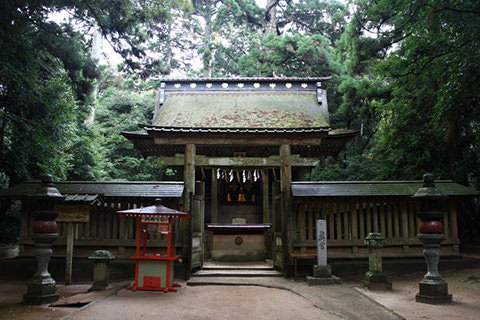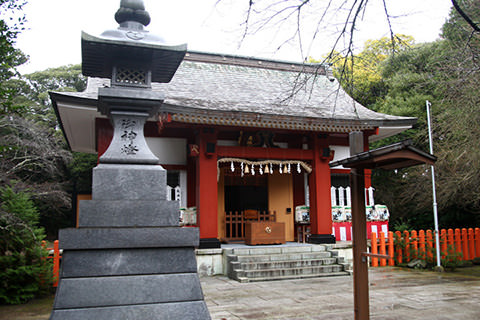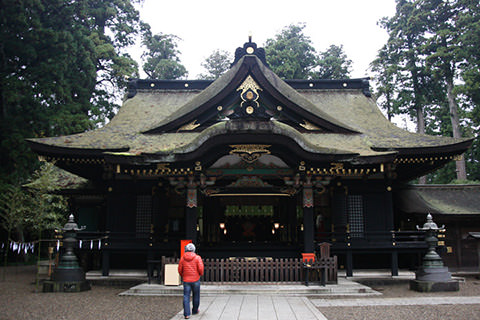東国三社を巡る
The three shrines of Tōkoku, known for their ancient strong faith, are:
These three shrines, located across the border between Ibaraki and Chiba, are known as the Three Shrines of Tōkoku. It is famous that if you connect the locations of these three shrines with straight lines, you will draw a right-angled triangle on the map.

Kashima Jingu is about a 10-minute walk from JR Kashima Jingu Station. A large torii gate stands at the entrance to the approach, and beyond the approach is the Romon gate, which is an important cultural property. Another torii gate facing the sea stands on the east side of the approach. This torii gate is said to be built in a straight line connecting Kashima Jingu and Katori Jingu, with the sunrise illuminating Kashima and Katori in order. The entire shrine area is designated as a national cultural property, and the grove of tall trees from the main shrine to the Okumiya is a natural monument. The main deity enshrined is Takemikazuchi no Okami, who is known for subduing the gods of Ashihara no Nakatsukuni in Japanese mythology, and his battle with Take Minakata no Mikoto of Suwa Taisha is said to be the origin of sumo wrestling.

Located in Kamisu City, Ibaraki Prefecture, about 9 kilometers south of Kashima Jingu. It is a shrine built on the waterfront of Hitachitone River, and there is a small well called Shinobiumoi under the torii gate. This well is said to have fresh water that pushed out the seawater and is known as one of Japan's three major spiritual waters. The main deity enshrined at Ikisu Shrine is Amenotorifune no Kami, who led the deities of Kashima Jingu. The red shrine building stands quietly in the deep grove of trees.

The main deity enshrined is Futsunushi no Mikoto. This deity appears only in the Nihon Shoki and is not mentioned in the Kojiki, and there is a theory that it is the same as Takemikazuchi no Okami of Kashima Jingu. According to the "Engishiki Jinmyocho," in the Heian period, only three shrines were called Jingu: Ise Jingu, Kashima Jingu, and Katori Jingu, which were important frontlines for the Yamato court against the Emishi. Katori Jingu is located 12 kilometers from Kashima Jingu and 9 kilometers from Ikisu Shrine, forming an isosceles triangle on the map. The large torii gate leads to a wide approach lined with autumn leaves, and the red Romon gate and black main hall within the shrine grounds are designated as important cultural properties. The key stone in the shrine grounds is said to hold down the tail of the giant catfish that Kashima Jingu's key stone is holding down the head of.
From the location of Katori Jingu, Ikisu Shrine is in the direction of the sunrise on the vernal and autumnal equinoxes, and Kashima Jingu is in the direction of the demon gate. Moreover, if you connect Ise Jingu, which has a relationship with these shrines, on the map, you will find Mount Fuji, the Imperial Palace, and Meiji Jingu along the straight line, and further west is Takachiho. The geography of touring the Three Shrines of Tōkoku is a journey into the grand narrative of Japanese mythology, connecting the highest deity of Takamagahara at Ise Jingu, the subjugator of Ashihara no Nakatsukuni at Kashima Jingu, and the closing of the mythology at Takamagahara.